In this article, we’ll look at some of the most famous temples in Nepal and explore their histories, architecture, and cultural significance.
From the majestic Pashupatinath Temple to the sacred Boudhanath Stupa, we’ll look at what makes these temples so special.
So, get ready to discover the hidden treasures of Nepal’s religious heritage.
Most Popular Temples in Nepal
Here are some of the most popular and visited temples in Nepal in no particular order, we have tried to include some of the famous temples including Hindu and Buddhist temples around Kathmandu and outside Valley.
1. Pashupatinath Temple
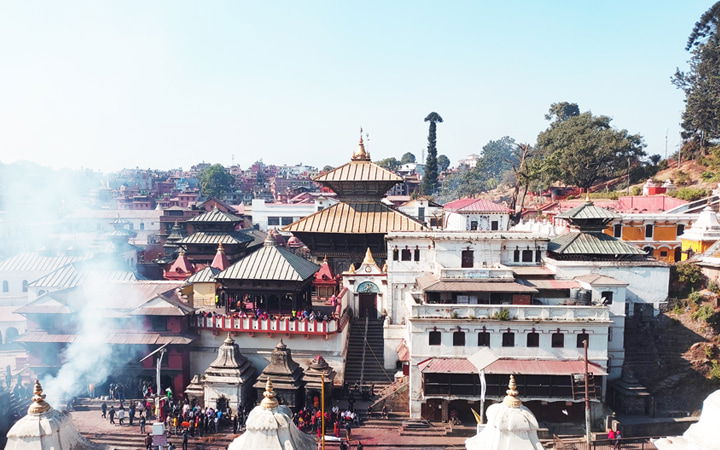
One of the sacred temples in Nepal is the Pashupatinath temple. It is located in Kathmandu on the banks of the Bagmati River. It is the biggest temple of Lord Shiva that is visited by thousands of Hindu pilgrims every year.
Hindus and Buddhists visit Pashupatinath any time of the year. But, it is mostly crowded during festivals like Teej and Shivaratri.
During Teej, married and unmarried women take a fast and worship Lord Shiva for the good health of their present or future husband.
Similarly, Hindu devotees worship Lord Shiva during Shivaratri, which also marks the end of the winter season.
The temple has pagoda-style architecture, and the complex has four silver gates facing four directions. The roof of the temple is gold plated and inside the temple resides a huge Shiva linga.
The holy temple of Pashupatinath is inscribed on the UNESCO World Heritage Sites list, so it is a protected area.
At the foot of the Pashupatinath, Hindus perform the cremation. The night aarti is also one of the attractions of the Pashupatinath temple.
Priests perform a spectacular aarti every night dedicated to Pashupatinath. Hundreds of pilgrims come to Pashupatinath to watch this aarti, which brings peace and positivity to them.
At a sacred place like Pashupatinath, wearing leather belts and clicking pictures is strictly prohibited.
The mysterious idol of Vipupakshya is also present at Pashupatinath by the bank of the Bagmati River.
According to Hindu mythology, Virupakshya, also known as ‘Kali’, was a man who once unintentionally had a sexual relationship with his mother.
This event is also said to commence ‘the Kaliyug’ period. Out of utmost regret, Virupakshya went to Lord Shiva for repentance.
But again, Virupakshya unintentionally burns the face of Lord Shiva while opening the lid of the hot utensil with the vapor.
Lord Shiva was so angry that he ran behind Virupakshya to kill him. Virupakshya then went to Lord Budhha and asked to save him. Lord Buddha gave him guidance to repent and a solution to hide him from Lord Shiva.
Lord Budhha asked him to hide beneath the ground where Lord Shiva could not find him and emerge slowly as time passed. It is said that once the Kali fully emerges from the ground, his repentance completes, and the Kaliyug will end.
Read Reading:
2. Swayambhunath Stupa
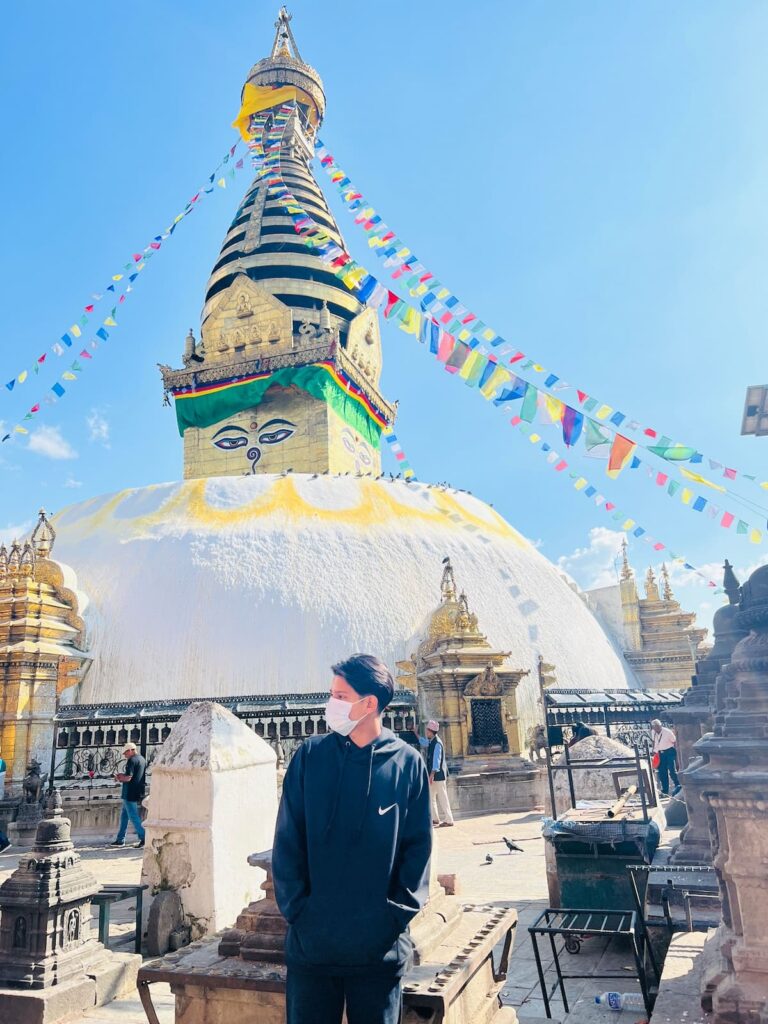
One of the sacred places among Buddhist pilgrims is the Swayambhunath temple, located in Kathmandu. Pilgrims of any religious background visit Swayambhunath.
It is one of the oldest religious places in Nepal and is cited as a UNESCO World Heritage Site.
According to mythology, it is said that Kathmandu Valley was a large lake. Manjushree saw a huge lotus pondering upon the lake. Manjushree then cut off the Chovar hill and drained the water out.
And that was how Kathmandu Valley originated. Similarly, the place where the lotus was blooming is said to be Swayambhu.
Just like the Boudha stupa, a giant stupa lies at the top of Swayambhunath which is 36 meters tall.
Similarly, there is a monastery, a temple of goddess Harati, numerous manes, and a giant gold antique structure that lies in front of the 365 staircases.
The temple of goddess Harati is considered sacred. It is said that she protects the children from evil. That’s why people bring their children to the temple and they pray to the goddess to protect their children from evil eyes.
Swayambhu is also a popular holiday destination among locals who come to spend a peaceful time here.
Swayambhu is also known for the spectacular view of Kathmandu Valley that it offers from the top of Swayambhu.
3. Boudhanath Stupa
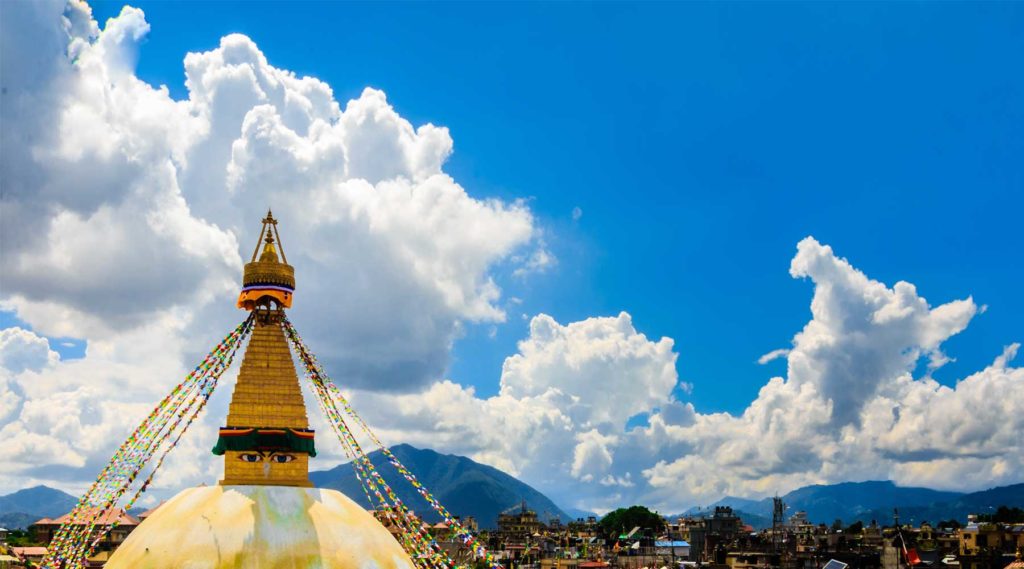
Boudhanath is a beautiful place inside the Kathmandu valley where lies the Boudhanath stupa. Boudhanath Stupa is Nepal’s one of the UNESCO World Heritage sites located 8 km east of Kathmandu.
Boudha stupa is the largest stupa in the Kathmandu Valley. It is a giant round white structure that has an inverted cone-like structure crown made up of gold.
On each side are painted the awakening eyes of the Buddha that symbolize awareness. The stupa has attached manes. The pilgrims circle the stupa while rotating manes.
Boudhanath stupa is religious among Buddhist pilgrims. There is a hall for monks and pilgrims to chant prayers and worship Buddha right in front of the stupa.
Boudha is a vibrant market occupied by several shops and restaurants. Boudha is mostly crowded during Buddha Jayanti, which is the day celebrated as the birthday of Lord Buddha.
4. Muktinath Temple
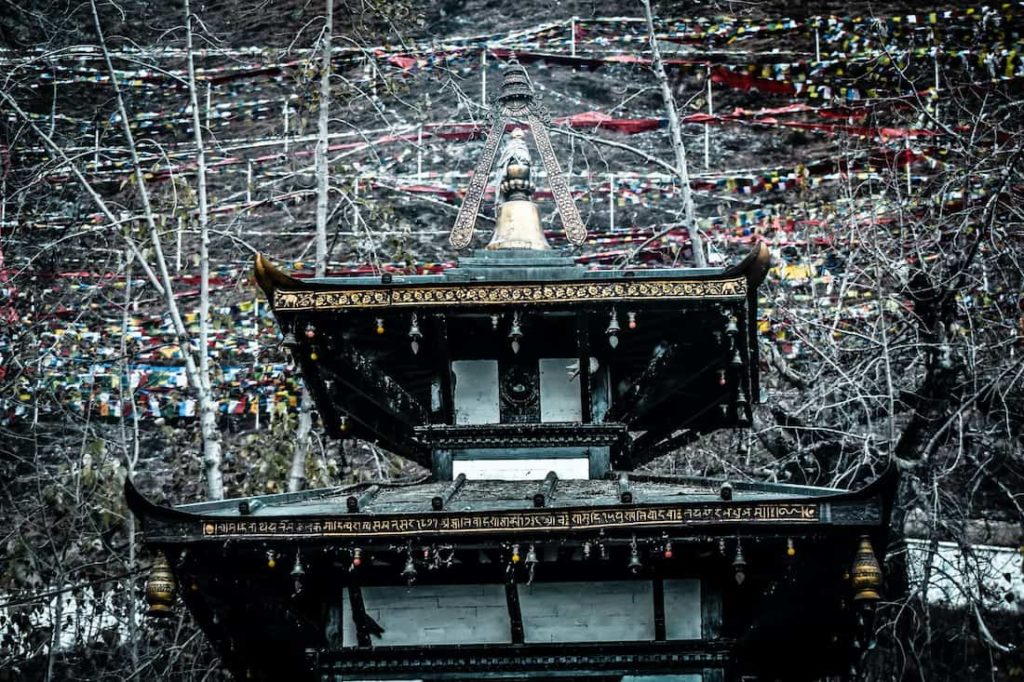
Muktinath temple is one of the religious temples located in the Mustang district of Nepal. It resides at an elevation of 3710m, which is quite a high altitude.
Mukti refers to salvation. It is said that visiting Muktinath at least once in life will wash away all your sins and cleanse your soul.
The architecture of the Muktinath temple is constructed in the pagoda style. The 108 waterspouts behind the temple are known as “Muktidhara ”.
The devotees visiting the temple take a bath in that tap water, which is said to release all the negativity from the body and bestow salvation.
You have two options to reach Muktinath. You can either take a flight from Kathmandu to Pokhara and then fly to Jomsom or take a road trip via jeep. The flight takes only 25 minutes to reach Muktinath temple whereas the road trip will take 2 to 3 days.
5. Budhanilkantha Temple

Budhanilkantha Temple is a Hindu temple located in Budhanilkantha, Nepal, dedicated to Lord Mahavishnu. It is also known as Narayanthan Temple and has a large statue of Lord Mahavishnu lying on a bed of snakes.
The water pond on which the statue lies is connected to Gosaikunda, a sacred lake believed to be the source of Lord Shiva’s water, giving the temple a direct connection to him.
The temple is regarded as a sacred place for both Hindus and Buddhists and a sign of religious harmony that has existed in the region since ancient times.
6. Manakamana Temple
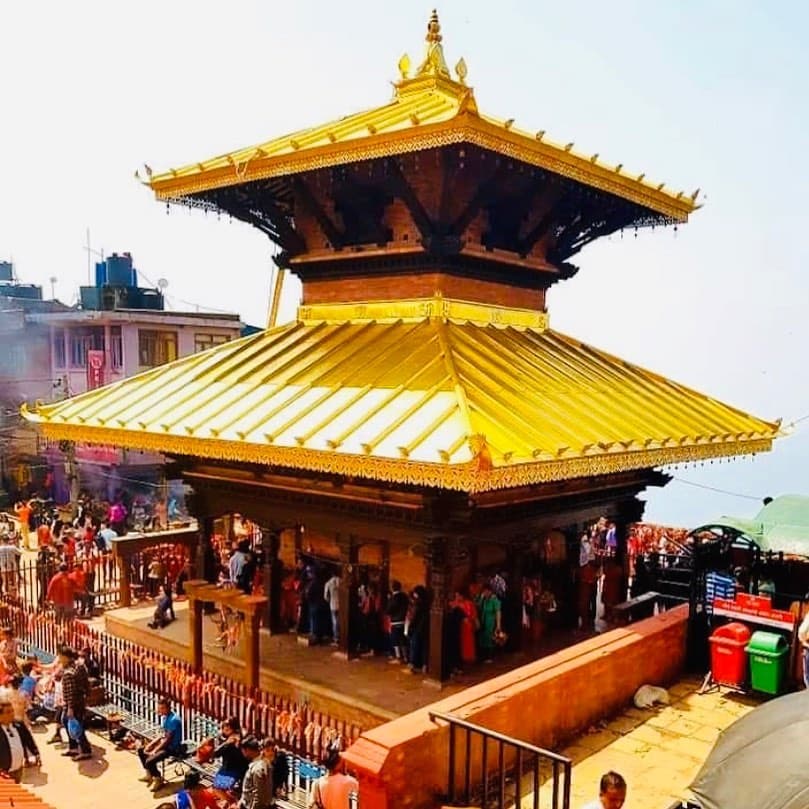
Manakamana temple is a religious temple of Goddess Manakamana Devi located in the Gorkha district of Nepal. The literal meaning of Manakamana in Nepali is Heart’s Wish.
Manakamana Devi is said to fulfill the wishes of pilgrims who visit the temple. The temple is situated at an elevation of 3900ft in the Gorkha district of Nepal.
You can reach Manakamana on foot but there is a cable car facility too. Walking may take several days so the convenient way to go to Manakamana is via cable car.
Manakamana cable car is probably the first cable car service in Nepal, which made it easier for devotees to visit Manakamana Devi and return home in a single day. During weekends, the crowd is exceptional at Manakamana.
From Kurintar, Pilgrims travel in a 2.8 km long ride in a cable car to the temple base. The hilltop offers a stunning view of some high peaks such as Ganesh, Manaslu, Annapurna, etc.
7. Janaki Mandir
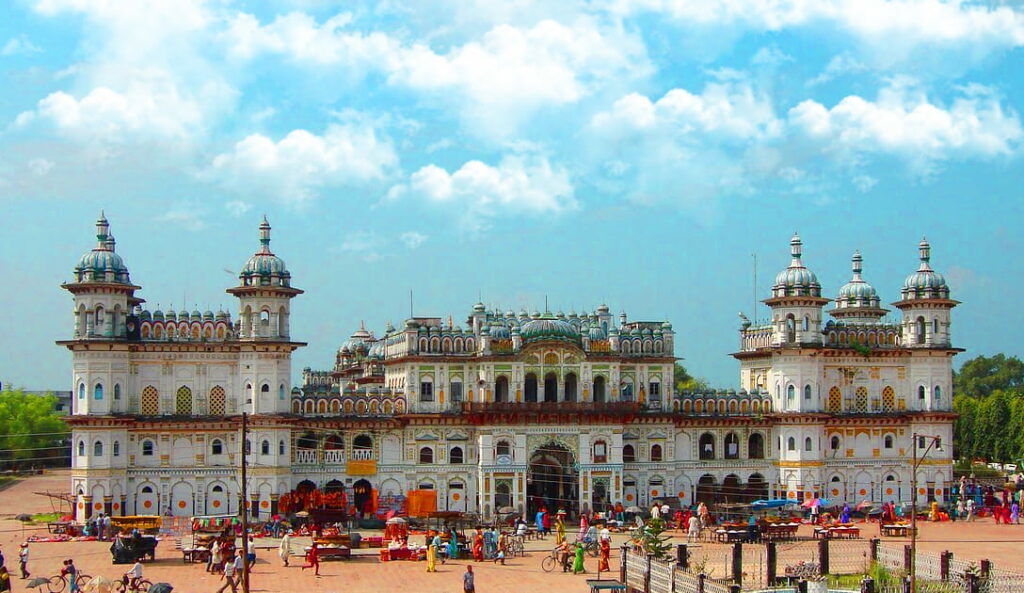
Janaki Mandir is a Hindu temple located in the Janakpur district of Nepal. The temple is named after the Hindu Goddess Sita, who was the daughter of King Janak.
She later married the Hindu God, Ram as mentioned in the sacred Hindu epic, Ramayana. Inside the temple, there are several idols of Ram and Sita together.
Janakpur temple is a massive architecture constructed in an area of 4,860 sq. feet. The giant building has unique architecture and is decorated with multiple colors making it vibrant and attractive.
It is a three-storied structure made entirely of stone and marble. All its 60 rooms are decorated with colored glass, engravings, statues, and paintings, with beautiful lattice windows and turrets.
The massive palace of Janakpur has Mithila architecture. The architecture is incredibly beautiful, which attracts a lot of tourists every year.
8. Pathibhara Temple
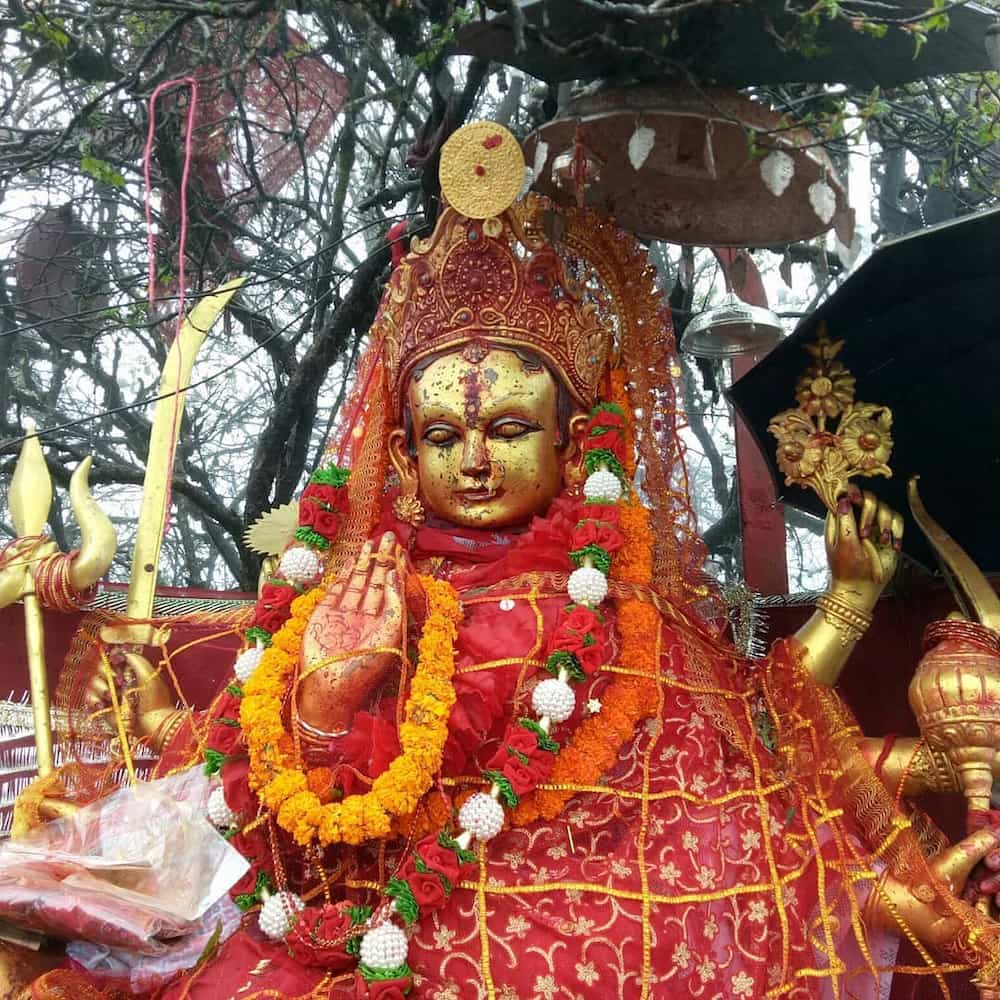
Pathivara Devi is a sacred goddess of Hindus in Nepal. Pathivara Devi temple is located at Taplejung at an altitude of 3,794 m (12,448 ft). Pathivara Devis is said to fulfill all our prayers if we visit her temple and worship her.
Even the royal families in the past used to visit Pathivara Devi to pray for the protection of the country. Pilgrims from any religious background can visit the Pathivara Devi temple.
The idol of the goddess looks fierce as she sits on the lion with a Trishul. It is said that, if you speak of going to Pathivara temple, you must visit no matter how. Else, it will be a bad omen.
The religious temple of Pathivara Devi resides on the hill of Pathivara, which takes about a week to reach. It is not a piece of cake to land up at the foot of Pathivara Devi. You must be able to walk for long hours on elevated steep paths.
It is also a popular destination among trekkers. Most trekkers go for the Taplejung trek during the winter season to enjoy snowfall and spectacular views of mountain ranges.
9. Taleju Bhawani Temple
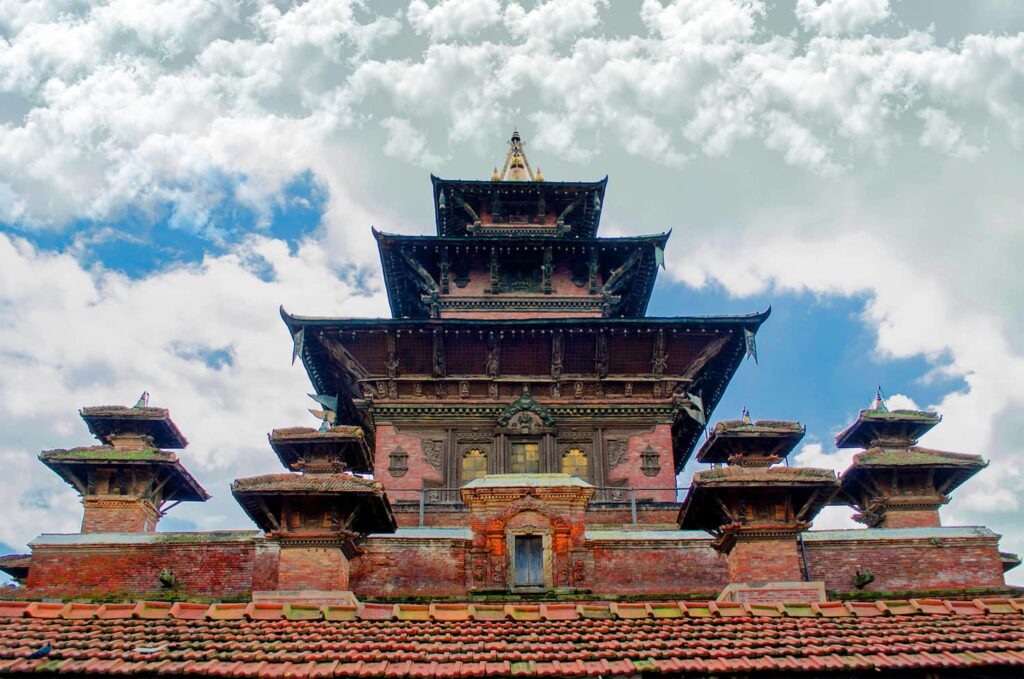
The Taleju Bhawani Temple is a significant Hindu temple in Nepal, dedicated to the royal goddess Taleju Bhawani of the Malla dynasty. Constructed in 1564 by Mahendra Malla, the temple is located in the Hanuman Dhoka area of the Kathmandu Durbar Square, which is recognized as a UNESCO World Heritage Site.
The temple houses a shrine dedicated to Taleju Bhawani and Kumari Devi, adding to its religious and cultural significance. It is noteworthy that the temple is only open once a year on the occasion of Dashain, making it a highly anticipated event for devotees and tourists alike.
10. Dakshinkali Temple
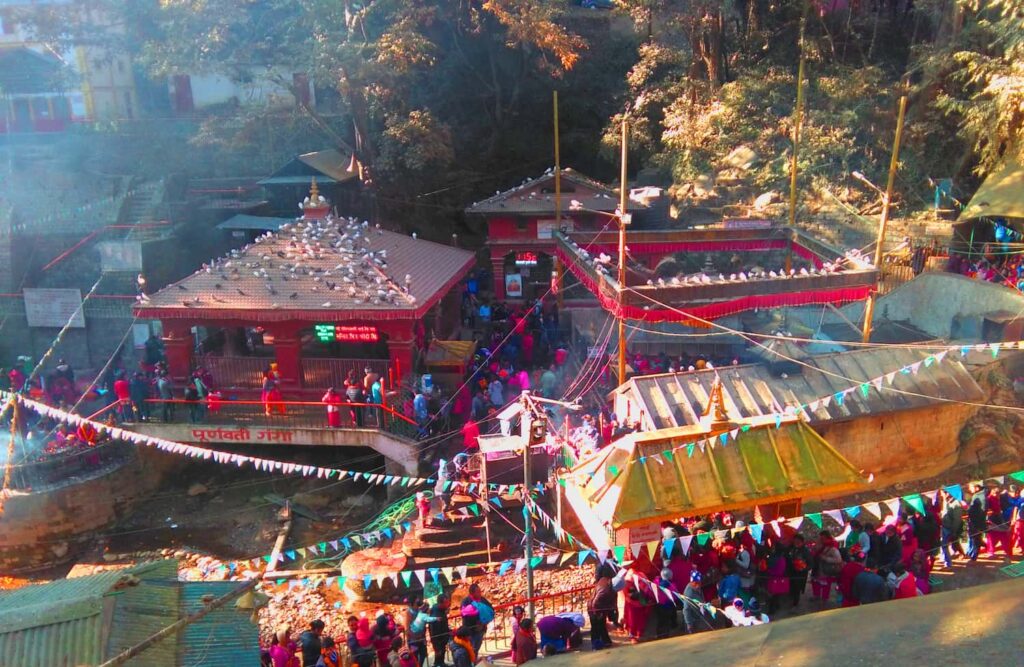
Dakshinkali Temple, located in the south of Kathmandu Valley, is one of Nepal’s most important Hindu temples dedicated to the goddess Kali.
This temple is well-known for its animal sacrifices, particularly of cockerels and uncastrated male goats, which are the primary means of worshiping the goddess, particularly during the Dashain festival.
The temple, like Pashupatinath Temple and Manakamana Temple, has great religious significance. It is a popular hiking destination near the village of Pharping in Nepal, in addition to its religious significance.
11. Halesi Mahadev
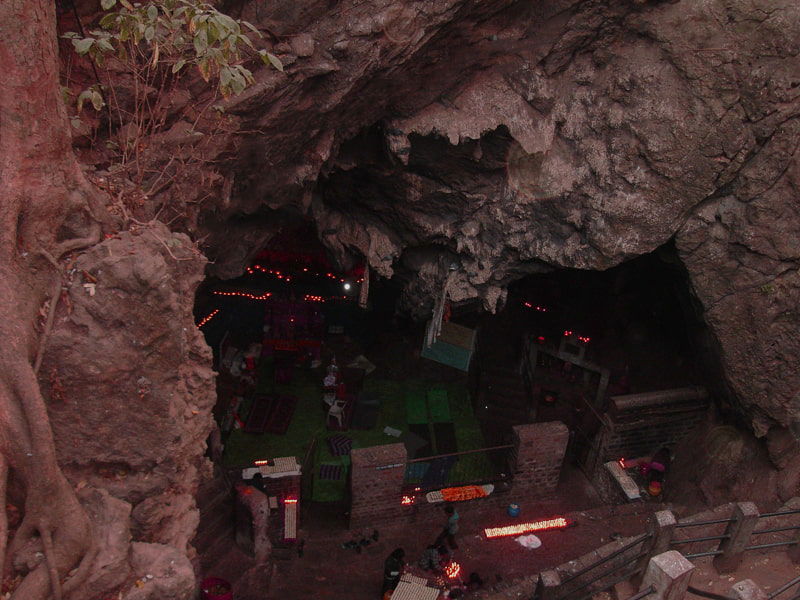
The Halesi Mahadev Temple, located in the Khotang District of eastern Nepal, is a revered pilgrimage site for Hindus, Buddhists, and Kirat.
Located 185 km southwest of Mount Everest at an altitude of 3,100 – 4,734 feet, the temple is an important cultural and religious center.
Hindus worship Mahadeva, a form of Shiva, at the temple complex, while Buddhists believe the caves are sacred because of the legend of Padmasambhava.
12. Kalinchok Bhagwati

Kalinchowk Bhagwati temple is a sacred temple located in the Dolakha district of Nepal. It is situated at an altitude of 3842m from sea level.
No one knows about the origin of this temple. But, the temple has been there since ancient times.
Though it is a temple of the fierce goddess, there is no rigid sculpture of the goddess. There is a 3 ft deep hollow where water never dries.
Pilgrims worship that sacred hollow as god and hang small bells and Trishul over the small cliff. They even sacrifice birds and animals as offerings to the goddess.
In the winter season, heavy snow falls at Kalinchowk. Kalinchowk is a popular trekking destination among trekkers too.
It is a part of the Gaurishankar conservation area, from where two rivers SunKoshi and Tama Koshi rivers originate. The top of the hill offers a spectacular view of Gaurishankar Himal.
According to ancient mythology, Kali Devi performed penance in the name of Gauri-Shankar (Shiva and Parvati) at Kalinchowk Hill, where lies the temple now. So, it is not possible for anyone to climb the Gaurishankar mountain.
It is believed that Shiva and Parvati live on that mountain. It is said that those who have tried to climb the mountain have never returned.
13. Mayadevi Temple
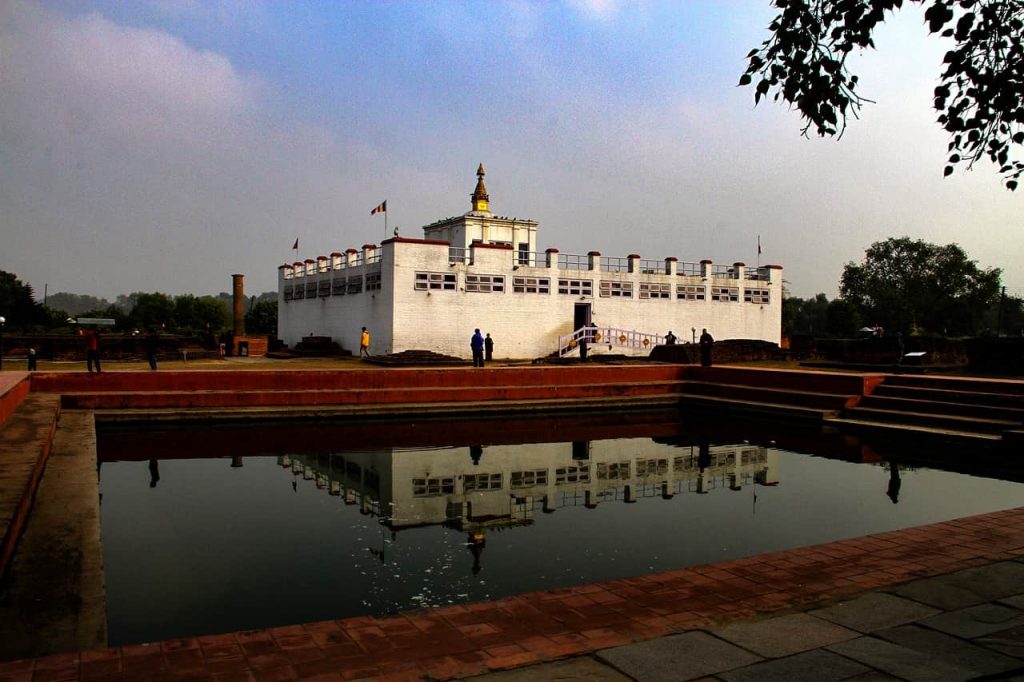
Lumbini is the holy city of Nepal, and Maya Devi Temple is one of its most famous Buddhist temples. A significant reason for the significance of this temple is that it is believed to be the birthplace of Gautama Buddha, the founder of Buddhism.
There is a sacred pool and garden near the temple, adding to its tranquil and spiritual atmosphere. Recent excavations revealed vestiges of a temple dating back to the third century BCE, as well as a timber shrine dating back to the sixth century BCE.
In search of spiritual enlightenment and historical information, visitors come from all over the world to the temple’s old architecture and religious significance.
14. Changu Narayan Temple

Changu Narayan is an ancient Hindu temple on a hilltop in Nepal. It is dedicated to Lord Vishnu and holds great significance for Hindus. The temple is named after Champak, a girl who married the prince of Bhaktapur.
According to legend, a cow herder discovered that his cow produced very little milk after grazing in Changu’s Champak tree forest. He and a Brahmin decided to investigate when they noticed a small black boy emerge from a tree to drink the cow’s milk.
The Brahmin cut down the tree, thinking the boy was the devil, and discovered fresh human blood. Lord Vishnu appeared and explained that he had been cursed for committing a crime and was now living in the underworld.
Conclusion
As you know Nepal is known as the land of temples and the majority of people here follow Hinduism. There are more than 10,000 temples in Nepal including big and small ones.
So, if you are interested in visiting the most popular temples then Pashupatinath Temple is the biggest and most sacred religious place.
If you want to know more about other religious places in Nepal then you can visit our other blogs too.
Overall, the temples in Nepal are a special and valuable experience for people who visit them. They have a long history, and beautiful designs, and are very important to the people’s beliefs. They show how Nepal’s culture and religion are very important.
If you have other questions then feel free to comment below.
FAQs
How many temples are there in Nepal?
While there are no official records of the exact number, it is estimated that Nepal is home to over 10,000 Hindu and Buddhist temples, varying in size and grandeur. These temples can be found throughout both urban and rural areas of the country and as it holds an important aspect of Nepali culture and tradition.
Why is Nepal known as the country of temples?
Nepal is known as the country of temples because of the abundance of ancient and sacred Hindu and Buddhist temples that are located all over the country.
Are non-Hindus allowed to visit Hindu temples in Nepal?
In Nepal, it is not permissible for non-Hindus to visit or enter Hindu temples. As per religious guidelines, they are strictly forbidden from entering the temple premises.
What are the items or actions that are prohibited inside Hindu temples?
Hindu temples have certain rules and guidelines that visitors need to follow. Some of the things that are not allowed inside the temple premises include wearing shoes or sandals, carrying non-vegetarian food or alcohol, and bringing in leather items like wallets or belts.
Is there dress code for visiting temples in Nepal?
Yes, visitors to Nepalese temples should dress modestly and conservatively. It is advised to dress in clothing that covers the knees and shoulders.